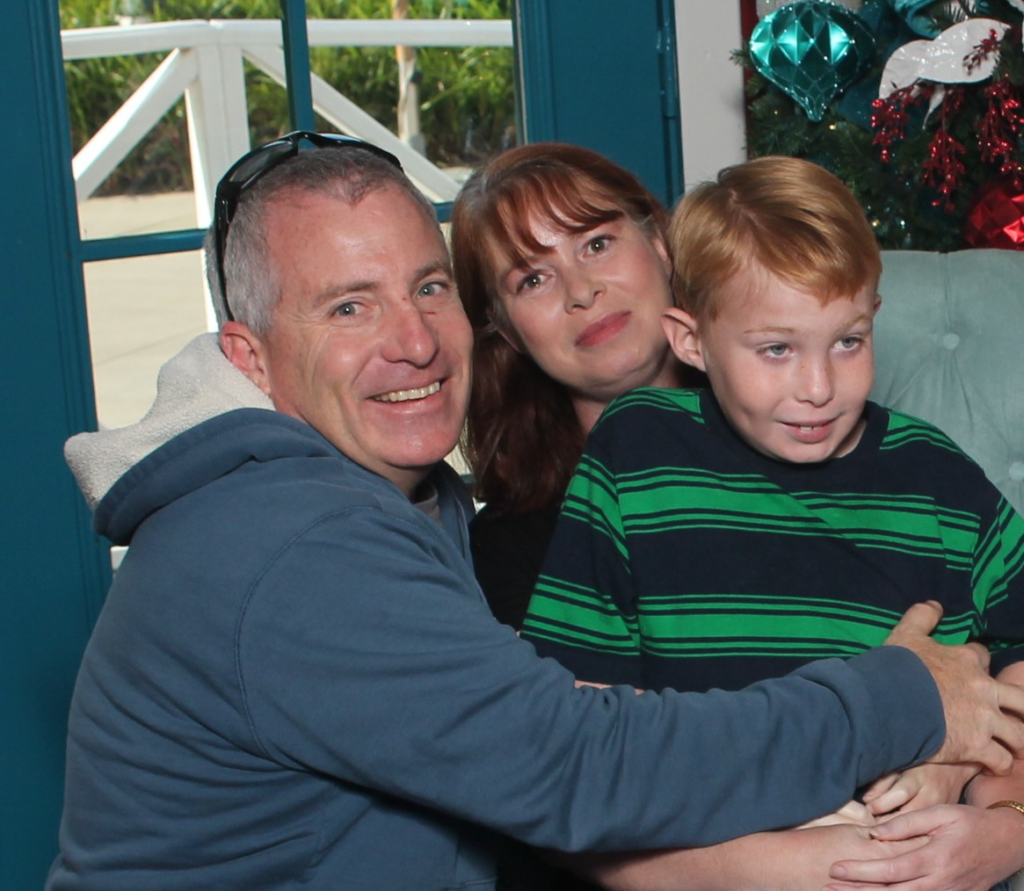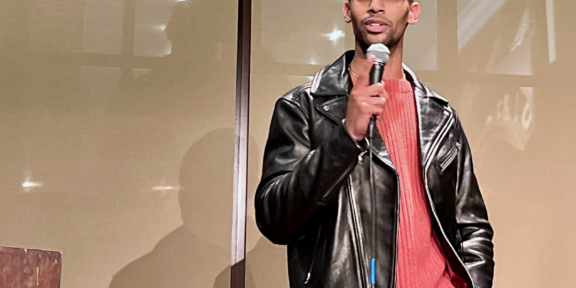By Alexis McCowan, The Undivided For Howard University News Service
A butterfly flaps its wings in Alaska and causes a hurricane in New York. This is the concept of
COVID-19 for a child with autism according to Dr. Shameka Johnson, a speech specialist.
The coronavirus has turned every human’s life upside down and added a mask to every possible
equation. The dynamics of daily life, hospitals, and schools has been dramatically altered. These
changes have been difficult on every human being, but pose unique challenges for autistic
people.
Kristel and James Minnock are the parents of Jesse Minnock. Jesse is 13-years-old, an only child
and he has severe autism. They currently reside in Ventura County, California. He is described
by his parents as a 13-year-old toddler when it comes to his mannerisms and behaviors.
The Centers for Disease Control and Prevention (CDC) estimates that 1 in 54 children in the U.S.
has autism. The prevalence is 4.3 times higher among boys than girls. In 2018–19, the number of
students ages 3–21 who received special education services under the Individuals with
Disabilities Education Act (IDEA) was 7.1 million, or 14 percent of all public school students.
Among students receiving special education services, 33 percent had specific learning
disabilities.

In March, James said Jesse’s school administration went from “hey, school tomorrow to
nothing.”
There were few packets that were sent out to families and there was minimal communication
from Jesse’s school.
According to James, Jesse doesn’t do well with transitions so they tried to provide normality for
their son at the beginning of the academic school year. Before the pandemic struck, James said
their most common day involved him going to the office and Kristel, his wife, working from
home as an adjunct professor.
They do this same exact routine every day.
“I’m sitting in my car until I can go home so that he thinks I was at work,” he said. He completes
his work from his car.
In terms of school, Jesse is in a virtual learning environment. He has one main teacher and there
are a few parent educators that participate in Zoom classes as well. He spends about 40 minutes a
day in his classes.
The transition into virtual learning was a strenuous one because Jesse loves school. Kristel said
he kept requesting to go to school; physical school.
According to an article from Spectrum News, many autistic people are being cut off from day
programs, school services and in-person medical appointments.
Children with autism spectrum disorder (ASD) develop at a different rate and don’t necessarily
develop skills as typically developing children. Children with ASD can struggle with focus,
attention, transitions, organization, memory, time management, emotional control and
frustration.
“He would try to get his backpack, he would ask maybe 50 times in a minute for the bus and I
just kept saying it’s not coming, it’s not coming,” Kristel said.
“He [Jesse] would reach a level of frustration where he did get pretty upset and self-injurious. He
usually starts with banging his head on the table, banging his head on hard surfaces and then he
may start hitting other people,” she continued.
 Psychologist, Dr. Sharon Thomas said children with autism are up against different challenges
Psychologist, Dr. Sharon Thomas said children with autism are up against different challenges
during coronavirus.
“Kids have anxiety about what COVID means and some difficulty adjusting to these new
routines that unfortunately change all the time. People that they were used to seeing regularly,
they don’t get to see anymore.”
“There is some difficulty with missing friends, although they’re expressing it in a way that looks
more like defiance and tantrums,” said Thomas.
James also said that on typical days before Covid-19, if Jesse would have an emotional outburst
there would be several trained professionals that would know how to diffuse the situation.
During the pandemic, Kristel acts as the trained professional.
The main support that the Minnocks receive comes mainly from within their household.
“People in our shoes, their social circles get very small very fast,” said James.
The Nelson family is also impacted by the pandemic and the changes in the environment. Akiko
Nelson, mother of Luke Nelson has been focusing on helping her son become as independent as
he can be. Luke is 21-years-old and has severe autism and limited communication. In March, his
school announced that the school would be closing and Luke had a difficult time with the
transition. Akiko decided to give it a try but his behavior was getting more aggressive.
After three days on Zoom, Akiko realized that virtual learning was not a good fit for her son.
“Zoom was putting more demand on him.”
Luke identified school as a place where he could socialize,but that aspect was not apparent to
him during virtual learning. Teachers unconsciously paid more attention to verbal students and
this created frustration for Luke.
“It’s natural for staff and teachers to gravitate towards the ones that can communicate and
conversate,” said Akiko.
Since the school was only offering Zoom, Akiko made the difficult decision to put a “pause” on
his education needs.
Akiko said, “It was only creating stress for Luke; there was no reward.”
One of the many challenges the Minnock’s face is not receiving occupational or speech therapy
at this time, which is an essential part of Jesse’s individualized education program. Speech
therapy for example is important because Jesse is non-verbal and he needs to know how to
communicate with others.
Without that “he is not getting a real education at all,” his mother opined.
Jesse’s transition to early learning has not been entirely effective and his father sees it as
performative.
“What we are doing right now, to me, is theater. Where we are all acting like we are doing
something that will help Jesse but it’s just theater; nothing is actually happening,” he said.
The virtual set up he believes for children on the autism spectrum is a result of a lack of courage
and communication.
“Where the courage would come in is at the federal, state and local level to have the courage to
say, “we can’t teach your child in the current environment, with whatever is going on, we can’t
do it,” said James.
“This is Luke’s last year because he is aging out and we decided to create a program to focus on
more self-help skills rather than doing academic skills,” said Akiko.
She continued, “The goal for us is to get him to reach a point where he can actually do it [tasks]
on his own. It’s more about making him independent in these little steps, like shaving, bathing…
and pouring his own milk.”
Researchers at the Johns Hopkins Bloomberg School of Public Health contributed to a new U.S.
Centers for Disease Control and Prevention report that finds the prevalence of autism spectrum
disorder (ASD) among 11 surveillance sites as 1 in 54 among children aged 8 years in 2016.
“They [autistic children] each have unique challenges depending on what level of functioning
they have and what other challenges they have in addition to autism,” said Thomas.
“Some of my clients have autism as well as Attention Deficit Hyperactivity Disorder.” Right
now those clients are having “the most difficulty staying focused, staying on task, remaining
engaged and given the distance between the teacher and the student it’s been harder to keep them
engaged,” she continued.
People with autism often have anxiety and struggle with small changes to their schedule. The
National Institute of Neurological Disorders and Stroke reported that people with ASD thrive off
of routines and when there is the slightest change or disruption can pose a challenge. The result
of these changes often emotional outbursts that have the potential to get violent.
“There is a risk in regression not just in their difficulty practicing and maintaining their social
skills, but a tendency to withdraw into themselves and to go back to being more rigid in the
things that they like to do. They may want to focus more on iPad time or video games or the
things that are individual activities that are at times easier than keeping up with a social
interaction with a peer,” said Thomas.
Psychologists spend months preparing autistic clients for different transitions in life, but no one
could prepare for the coronavirus.
Speech pathologist, Dr. Shameka Johnson talks about the importance of educators and clinicians
during the pandemic. She said that the responsibility to adapt to the changes lies with educators
and clinicians.
Johnson said the pandemic has the potential to stunt children with autism’s growth but “it isn’t
the sole indicator.” The real indicator is the ability of the educator or the clinician to engage the
child.
“If there is a disconnect in the service or the education, that’s the biggest indicator of the child
regressing or not retaining information more so than the pandemic, because life happens all the
time,” she said.
Johnson said there is still a job to be done, whether the world is in a pandemic or not. clinicians
and teachers have to prepare themselves to best support children with autism.
“It’s really about how we respond to life happening. If we’re not prepared as the professional on
our way to address and adjust and meet the needs of the child that’s going to be more of an
impact then the actual pandemic.”










